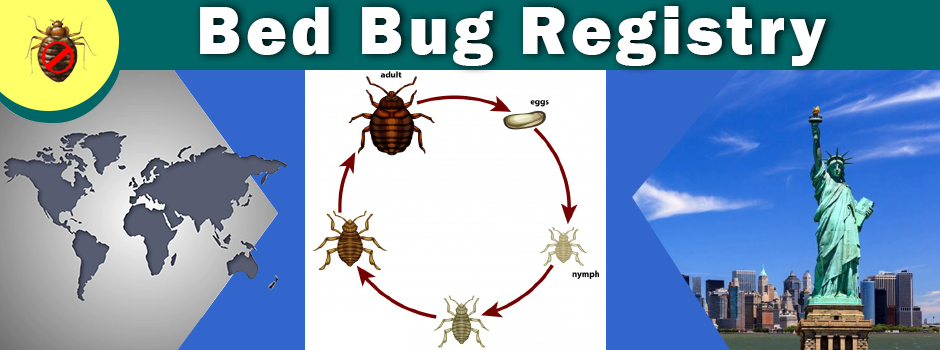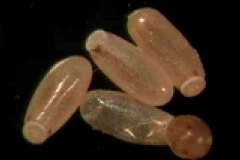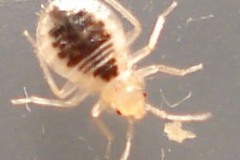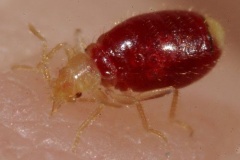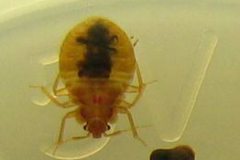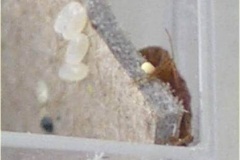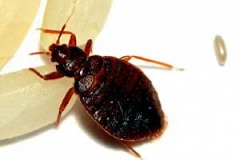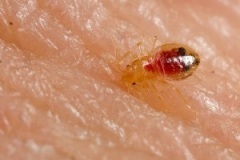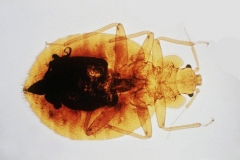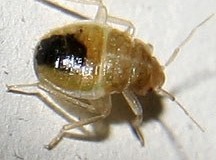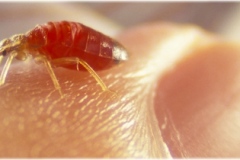Many people believe that bed bugs can only infest a dirty, unkempt household
but this is NOT the case.
Bed bugs can infest any environment.
It doesnt make a difference whether the residence is state of the art or in a state of decay, bed bugs will come as long as theres sufficient food available.
We know this because there are plenty of cases of bed bugs infesting run-down apartments along with 5-star hotels.
The reason infestations are more common in dirtier residences is because clutter and neglect can cause property owners or tenants to identify an infestation less quickly.
Allowing it to spread rapidly and easily.
Bed bugs are attracted to human blood like mosquitoes and other similar insects.
But unlike other insects
They cannot fly or jump.
They are also unable to live 24/7 on their hosts to get a full meal (unlike ticks).
Because of this bed bugs only feed strategically while their hosts are asleep.
When bed bugs are young, its hard to see them because of their small size and pale color.
But when they become adults you should be able to spot them more easily
In fact, to those who are observant..
Bed bugs are visible to the naked eye.
Unless theyre in a cluttered environment that makes them difficult to locate.
Keep in mind that it isnt the clutter itself that will attract bed bugs, but certain other factors.
The main cause of bed bugs is an overall lack of awareness.
So its important to educate yourself and know what to look for. This includes:
How to spot bed bugs before they can spread
The right steps to prevent the specific causes of bed bugs
And how to kill bed bugs
Because if youre stuck with a severe bed bug problem:
It will turn your life upside down.
So dont sit there and let bed bugs take over your home. If you spot even one bed bug, its critical that you take immediate action.
We are bed bugs primary hosts.
(and main source of food)
So its no surprise that bed bugs appear all over the world, with reported cases in every state in America.
Although many believe that bed bugs mainly come from motels and hotels because of the volume of foot traffic in these locations..
(Note: If you have experienced bed bugs at a hotel. You may be eligible for financial compensation).
The fact is bed bugs can appear almost anywhere as they hitchhike from one place to another.
Some of the lesser talked about places where bed bugs are found include:
Wherever bed bugs are found, its likely you will unknowingly bring them home with you.
Its important to be mindful of the fact that certain foods attract common rodents and pests.
Mice and rats for example:
Are attracted by foods such as peanut butter, hot dogs, nuts, or dried fruit.
Insects like bed bugs on the other hand
Need ONLY warm-blooded creatures to survive.
Though there are cases where bed bugs feed on animals, for the most part, they stay strictly with humans.
This is why bed bugs are labeled as parasites. Which is an organism that depends on another species (a host) to survive.
So to answer this question.
Bed bugs are attracted by humans.
Specifically, by their body heat and from the carbon dioxide that humans exhale.
Blood makes up around 7% of the overall weight of a human being. So, if the average weight of an adult male is 180 pounds:
Thats just over 12 pounds of blood.
In other words
Humans are essentially an unlimited food source for these creatures.
There is a lot of talk out there about whether bed bugs are more attracted to certain types of blood.
Humans can have varying blood types like the following:
(A+ | A- | B+ | B- | O+ | O- | AB+ | AB-)
Currently, there are no credible scientific studies that indicate whether your blood type affects your propensity to be bitten by bed bugs.
Though there is talk out there about whether having a noticeable blood-alcohol level can deter bed bugs from biting you. According to a University of Nebraska-Lincoln study, bed bugs do prefer alcohol-free blood.
(Though we wouldnt recommend drinking consistently to avoid being bitten).
At the end of the day You shouldnt worry about how your blood type will affect your likelihood of being bitten and experiencing symptoms.
Though it is true that bed bugs might be attracted to certain people over others.
Even if its not likely due to blood type
But instead bed bugs might be more attracted to you because of the following:
First of all, we should note that cleaning chemicals do not attract or deter bed bugs.
From what we know, there is NO evidence that suggests products you use regularly in your home.
Such as:
Would have any real effect in attracting these pests.
Bed bugs, however, are attracted to a chemical called histamine, according to Dr. Regine Greis (who is famous for letting bed bugs bite her over 180,000 times).
Histamine, will build up on the skin and feces of bed bugs to alert their friends of safe locations to come feed.
Researchers discovered that this is a common way that these insects communicate.
(Through the build-up of Histamine)
This pheromone causes issue with infestations that are facing neglect. When not dealt with, the build up of Histamine will cause the infestation to snowball.
Do Bed Bugs Like Perfume?
As mentioned above, there are no household products that will specifically attract bed bugs.
Therefore, strong scents such as perfume will have no effect on an existing or future bed bug infestation.
Below are 5 things that people say attract bed bugs, and we will debunk whether they indeed attract bed bugs or not.
This is a myth.
Bed bugs are famous for their ability to go unseen for long periods of time.
So, you might be concerned whether bed bugs like to hide in wood.
Though these insects like to hide in cracks/crevices
(Which could exist in wood)
Theyre not going to especially seek it out.
Therefore, discarding wood furniture will have no effect on your homes vulnerability to an infestation.
This is a myth.
Its embarrassing to think about this, but its common sense.
If bed bugs feed on blood
Are you at greater risk to being bitten when on your period?
The key here is that its not the scent of blood that attracts bed bugs. Its the CO2 and body heat from the host.
So the answer to this is NO.
Bed bugs are not more attracted to someone on their period and they have no way to even sense that.
This is a myth.
There is little evidence showing that urine will attract bed bugs.
Yet why is this a common misconception?
Here is the thought process:
This is a myth.
Though certain scents will attract bed bugs, those smells do not come from the cleaning chemicals in your closet.
Products like ammonia, bleach, laundry detergent, Windex, dishwasher detergent, etc. will not attract bed bugs.
There is one chemical, histamine, that does in fact attract bed bugs, though it is not found in common household products.
This is a fact.
According to the Journal of Medical Entomology, researchers found that bed bugs are actually attracted to certain colors more than others.
In this study it concludes that the following colors can trigger bed bugs:
Top colors that attract bed bugs = Black, Brown, Red
Top colors that deter bed bugs = Yellow, White, Green
So when it comes to bedsheets, there are certain darker colors that may attract bed bugs.
Though keep in mind that simply changing the color of your sheets is not going to remove or prevent an infestation from happening.
Read more from the original source:
What Attracts Bed Bugs Into Your Home? | Food, Perfume, Urine?

 Residence
Residence  Location
Location 
